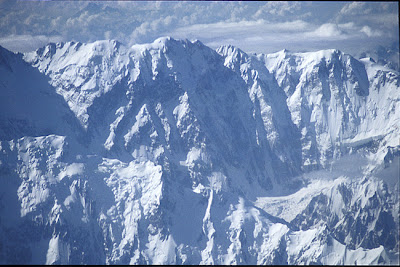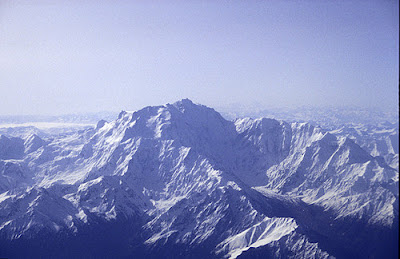 |
| Iqbal Masih. (source) |
This modern system of slavery works like this. In the poorer regions of the country people have too few opportunities to education, health or jobs. Business owners give out loans frequently for financial emergencies like weddings or surgeries. These business men offer that the borrowing family do not have to return it directly. Instead they can nominate someone from the family, usually a child, to work for the business men to repay the loan with his salary. On the face, it appears as a very generous offer because not only does the business man gives the loan, he also arranges for it to be paid back from his own money and provides jobs as well. In reality, these businesses get cheap labor and this system of bonded labor continues which keeps the factories running. This system effectively made Iqbal Masih and many other children like him slaves; working twelve hours a day six days a week for the coming years.
The working conditions were tough and any lax in effort was severely punished by whippings and beatings. Malnutrition and overworking resulted in stunted growth of the children. At age ten, Iqbal was only four feet tall with a weight of about 30 kg. Iqbal escaped once but unlucky for him, he went to a police station. The police officer there was more interested in getting some money from the factory owner as a reward of returning the little workers. After this Iqbal was chained to the weaving machine and got starved and beatings as a reward.
Some time later he got to know about an organisation called Bonded Labor Liberation Front (BLLF) which can help him. He went to an awareness event held by the BLLF. Although shy he shared his story there and learned that debt slavery has been banned by the government of Pakistan some years ago and it was illegal to keep someone bonded. He also met one of the union leader, Ehsan Ullah Khan who lend a sympathetic ear to Iqbal's story. Iqbal, armed with this new knowledge and with the help of Khan confronted his master at the factory. With the help of Ehsan Ullah Khan, he managed to convince the factory owner about the illegal nature of his labor force. The factory owner let Iqbal and some other children go free.
After this Iqbal started studying in a school run by BLLF. Alongside studies, the twelve year old started actively campaigning against debt slavery. Although too small for his age, he would demonstrate and give energetic speeches at bonded labor awareness rallies. He would go to factories and talk to other children and raise awareness of labor laws among them. He took some risks talking to those children but he cared little. It was like all the pent up energy in his small body was being released and he had found a positive outlet. Ehsan took him to Sweden and the United States to raise awareness of child and debt slavery in Pakistan. His message was straight forward:
Wherever Iqbal went, he became an inspiration. He received the 1994 Reebok's Human Rights "Youth in Action" Award in Boston. He became ABC TV's person of the week. His story was shared on many mainstream international media outlets. Through his efforts many carpet factories were facing ban on sale in the local and international markets until they rectified their labor practices. Iqbal and Ehsan had received some threats from the carpet factories' mafia. Upon his return to Pakistan Iqbal had decided to deepen his understand of the law and study to become a lawyer so he can help others less fortunate children but his luck had run out. On 15th April 1995 he returned to his hometown for Easter. The next day he was riding home on his bicycle after mass when he got shot by a twelve gauge shot gun. He died on spot. The weapon was wielded by a local heroin. Many believe the carpet mafia was responsible for pulling the trigger. The truth matters little.
Iqbal died for a cause he strongly believed in. For him it was very simple. He did not want others to suffer the same way he did. He lived as a symbol of courage believing he could bring a change. The US department of labor announced an Iqbal Masih Award which is given out each year to honor the young hero's memory and to inspire others. Inspired by his speeches at their school, some American children raise funds to build a school in Iqbal's home town. He became a beacon of hope to the ten million child laborers in Pakistan but was extinguished too soon.
Iqbal's story on ABC:
http://www.mirrorimage.com/iqbal/media/abc/person.wav
 |
| A carpet weaving factory much like the one where Iqbal Masih worked. (source) |
Some time later he got to know about an organisation called Bonded Labor Liberation Front (BLLF) which can help him. He went to an awareness event held by the BLLF. Although shy he shared his story there and learned that debt slavery has been banned by the government of Pakistan some years ago and it was illegal to keep someone bonded. He also met one of the union leader, Ehsan Ullah Khan who lend a sympathetic ear to Iqbal's story. Iqbal, armed with this new knowledge and with the help of Khan confronted his master at the factory. With the help of Ehsan Ullah Khan, he managed to convince the factory owner about the illegal nature of his labor force. The factory owner let Iqbal and some other children go free.
After this Iqbal started studying in a school run by BLLF. Alongside studies, the twelve year old started actively campaigning against debt slavery. Although too small for his age, he would demonstrate and give energetic speeches at bonded labor awareness rallies. He would go to factories and talk to other children and raise awareness of labor laws among them. He took some risks talking to those children but he cared little. It was like all the pent up energy in his small body was being released and he had found a positive outlet. Ehsan took him to Sweden and the United States to raise awareness of child and debt slavery in Pakistan. His message was straight forward:
"Childrens should have pens in their hands, not tools"
Iqbal died for a cause he strongly believed in. For him it was very simple. He did not want others to suffer the same way he did. He lived as a symbol of courage believing he could bring a change. The US department of labor announced an Iqbal Masih Award which is given out each year to honor the young hero's memory and to inspire others. Inspired by his speeches at their school, some American children raise funds to build a school in Iqbal's home town. He became a beacon of hope to the ten million child laborers in Pakistan but was extinguished too soon.
His cheeky smile and twinkling eyes gave others confidence that there exists a light in this world worth fighting for but his sudden demise showed that the struggle has only just started.
 |
| Iqbal Masih died when he was almost 13 years old. He was a leading activist against child labor and debt slavery around the world at that time. |
Iqbal's story on ABC:
http://www.mirrorimage.com/iqbal/media/abc/person.wav



















